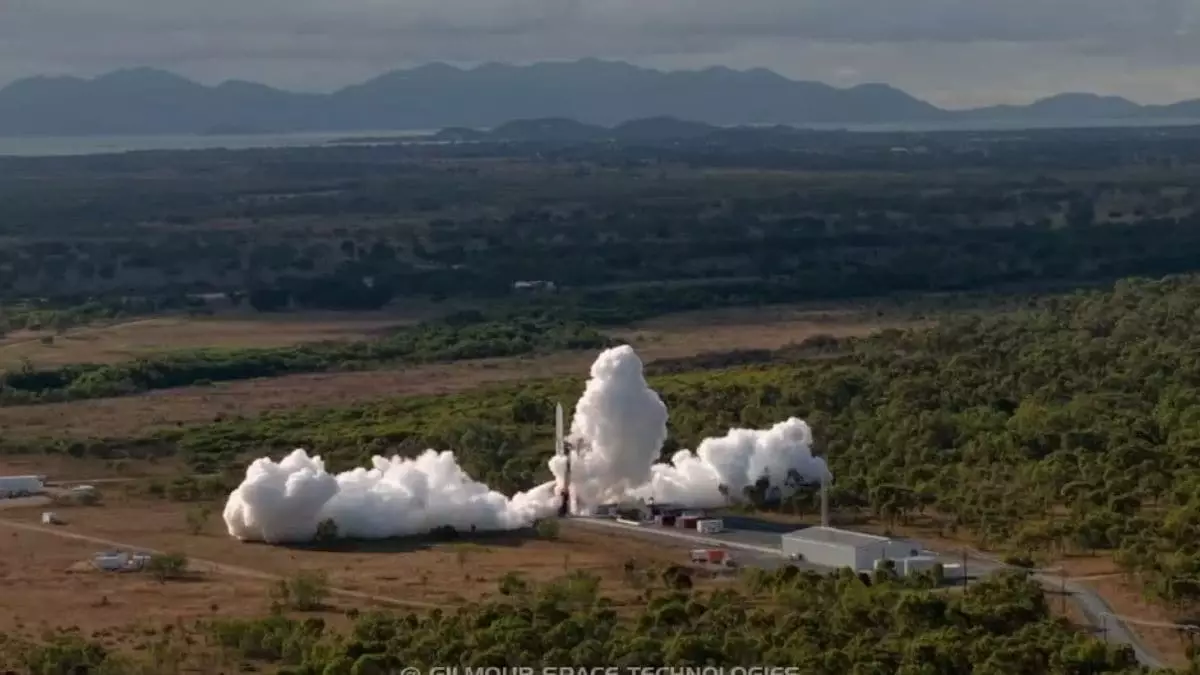Australia’s recent attempt to break into the space industry with the launch of the Eris rocket showcases a compelling narrative of ambition and resilience. Yet, beneath this veneer of progress lies a sobering reflection on the gap between aspiration and achievement. The launch was undeniably historic—marking Australia’s first domestically produced orbital vehicle. However, the sobering reality is that the mission ended in failure mere seconds after liftoff, with the rocket tumbling back to Earth and crashing. While this setback could be dismissed as a typical part of aerospace development, it also underscores the harsh truth: the Australian space industry is still far from maturity, still grappling with fundamental technical challenges, and perhaps overestimating its current capabilities.
Despite the initial excitement, the launch demonstrated deficiencies more glaring than celebrated. The sideways drift and rapid descent of the rocket symbolize the significant technical hurdles that remain unresolved. This is not merely a matter of building a new rocket; it’s a question of whether Australia, with its relatively limited spaceflight infrastructure, can realistically compete on the global stage without substantial investments in technology, expertise, and sustained testing. The narrative of flying into space on a maiden attempt, especially one so public and profound, reveals a disconnect between political enthusiasm and pragmatic engineering.
Learning or Presuming? The Real Lessons Behind the Failure
Gilmour Space’s optimistic statements post-launch paint a picture of perseverance and future potential, but they also seem to gloss over the hard truths. They emphasized the value of “every second of the flight” for data collection, implying that the event was a valuable learning experience. While this is a standard trope in aerospace circles, it’s hard not to question the depth and honest assessment of their technical readiness. A failure of this magnitude—more than a spectacular crash—raises questions about the robustness of their engineering processes, testing regimes, and safety protocols.
Moreover, Australia’s space ambitions seem still rooted in a “build and hope” mentality, rather than a strategic, well-financed, long-term plan that takes into account complex engineering realities. The delays caused by weather, technical issues like power surges and payload fairing failures, suggest systemic vulnerabilities that could have been mitigated through more rigorous pre-launch preparations and perhaps more modest initial goals. Instead of aiming for quick glory, the focus should be on painstaking validation, incremental testing, and learning from failures—none of which seem to be the hallmarks of this particular launch.
A Cultural and Policy Gap in Supporting Space Innovation
When analyzing Australia’s endeavor, one must consider the broader political and societal context. The narrative of a nation suddenly jumping into space flight is alluring but somewhat disconnected from the practical realities faced by countries with more established space sectors. Australia’s government has yet to demonstrate a concrete, comprehensive strategy to support this fledgling industry beyond symbolic launches. Without sustained investment, policy support, and international collaboration, these early attempts will remain fragile and prone to setbacks.
Furthermore, the regional climate challenges, such as Cyclone Alfred and unpredictable weather, reveal the necessity of robust risk management and infrastructure resilience. Relying purely on technological fixes while neglecting environmental and logistical realities sets a dangerous precedent. What is needed is a pragmatic approach that assesses long-term viability over short-term headlines—an aspect Australian policymakers must recognize if they genuinely intend to foster a self-reliant space sector.
The Broader Significance: A Nation’s Space Dreams vs. Stark Realities
While some may see this launch as a setback, others could interpret it as an essential stepping stone. It’s an indication of how high aspirations often confront the brutal realities of aerospace engineering. The Australian attempt is indicative of a broader pattern seen globally: countries eager to establish themselves as players in space without fully appreciating the intricacies involved. If anything, this failure underscores the importance of humility in technological pursuits and the need for honest appraisal of current capabilities.
Ultimately, Australia’s space journey reflects a wider truth: dreams of reaching the stars demand patience, meticulous preparation, and an acceptance that failure is merely a stepping stone—if approached wisely. The question remains whether Australia will learn from this setback, recalibrate its ambitions, and invest genuinely in building a sustainable, innovative space industry, or continue striving for quick success that sooner or later, will end in disappointment.


Leave a Reply